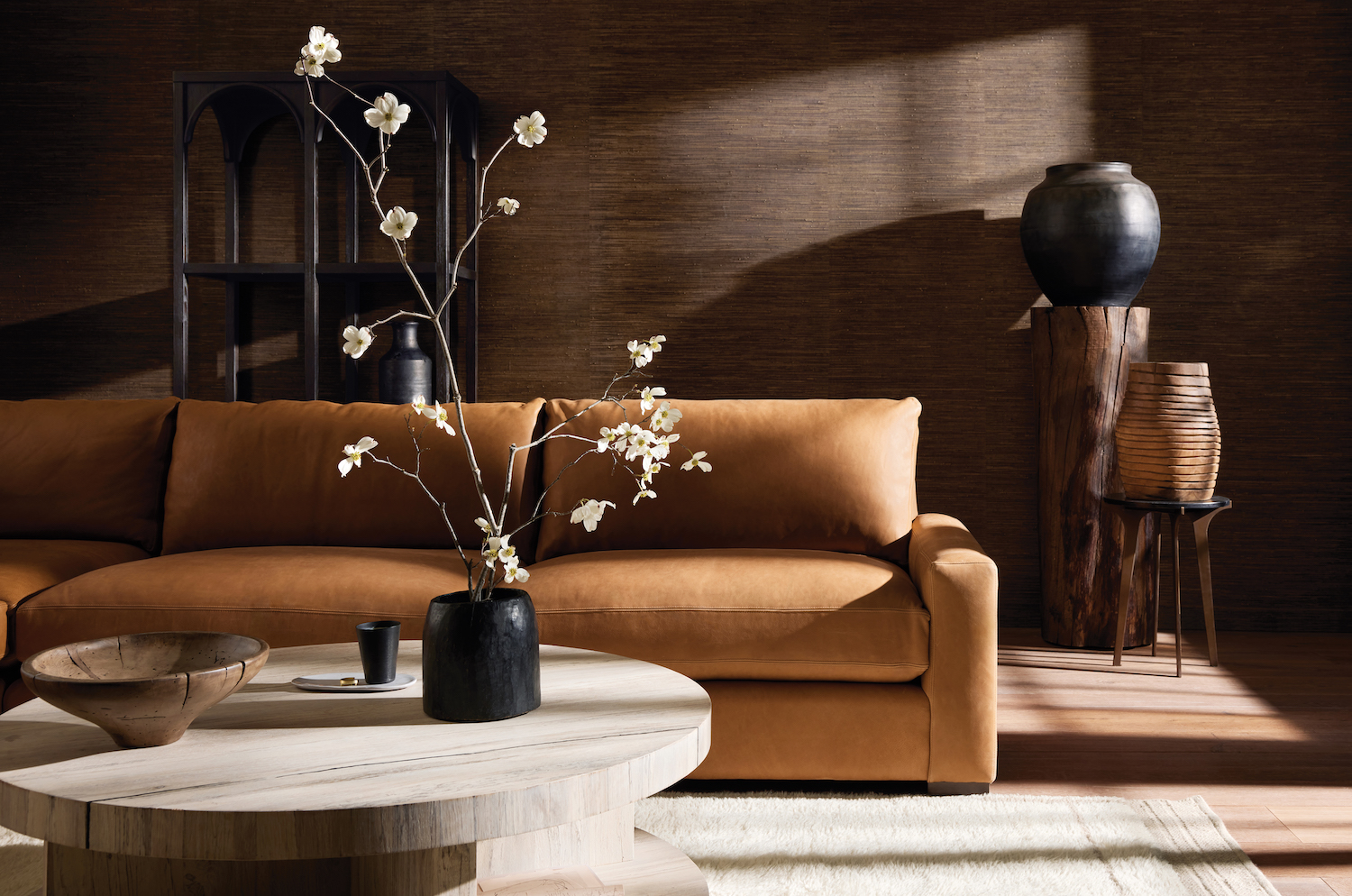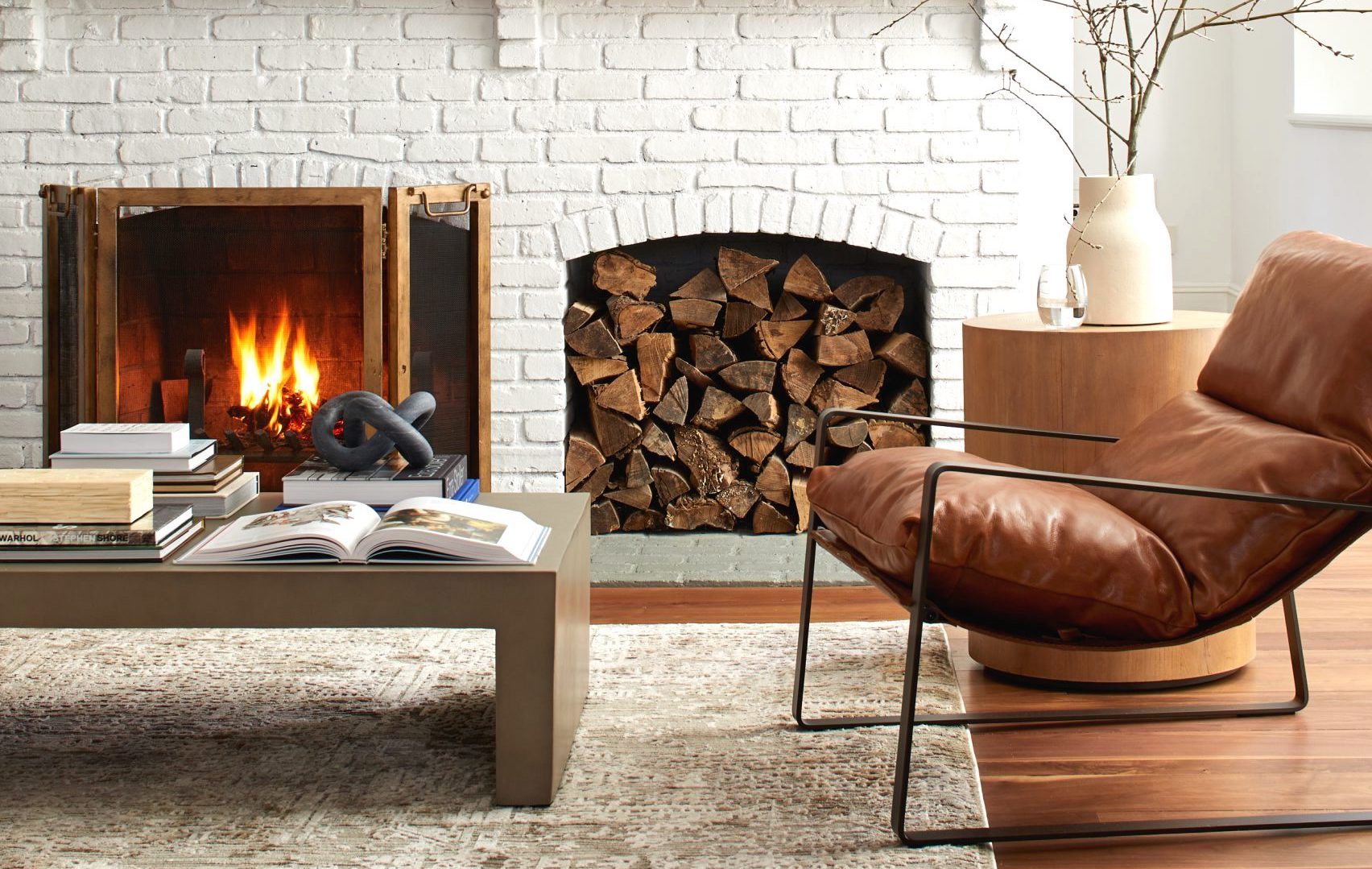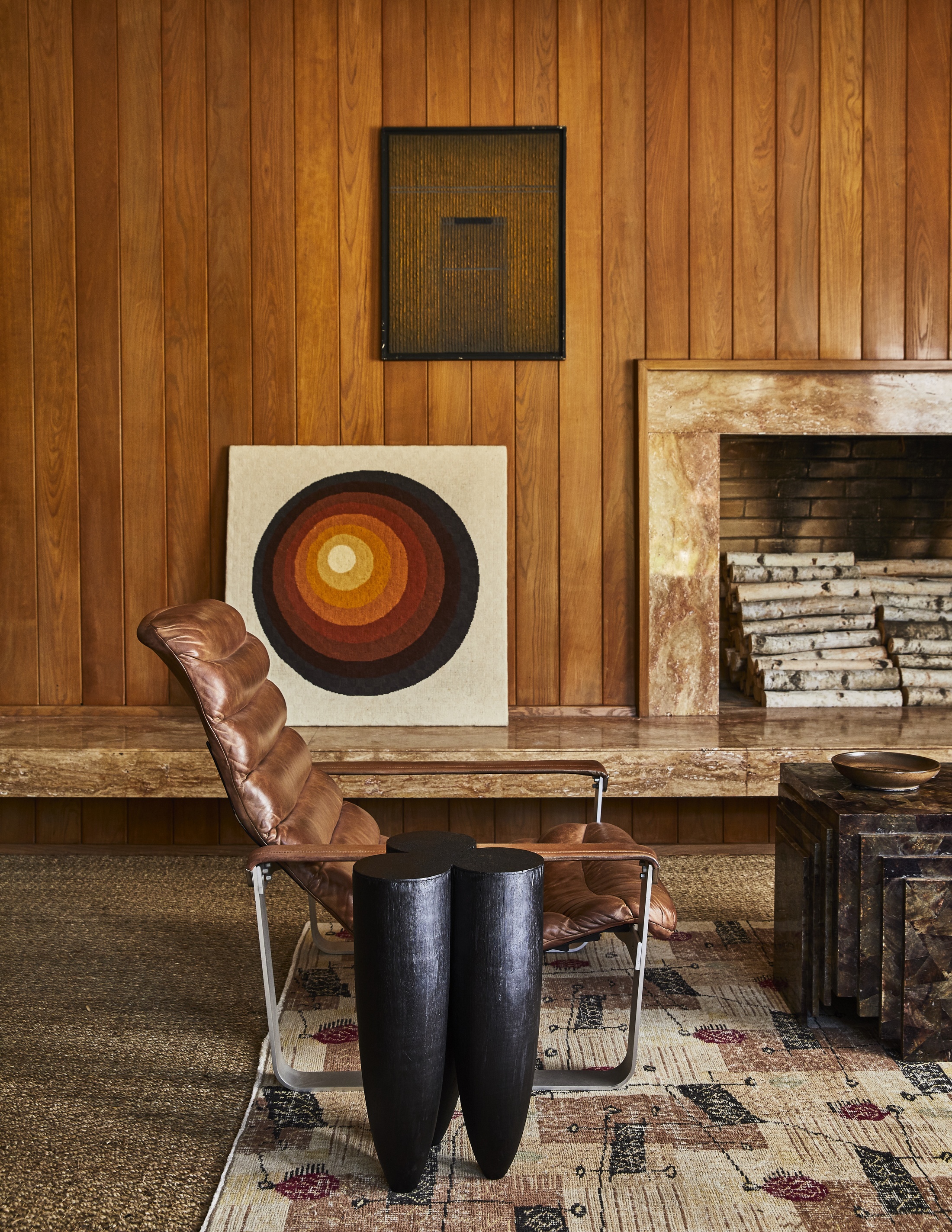
Leather furniture is still considered one of the most luxurious options on the market. While it might not be for everyone, this durable material lasts a seriously long time and the classic look has a timeless quality that suits an array of interior design styles. However, just as you’d need to clean your cotton sofa covers or take a cloth to your chenille, leather requires some regular maintenance to keep it looking its best.
All of that said, one of the many benefits of leather is its ease of cleaning. There’s no need to remove covers to wash them or soak them in detergents with a leather sofa or chair; instead, spills, crumbs, and grime can easily be wiped from the surface. But there is another step required if you want to protect your leather and help your living room furniture last. As a natural material, leather will need conditioning to keep it soft and supple, and to ensure its longevity. Here, we asked experts to explain how it’s done.
Why is it important to condition leather?

With age and exposure to heat and sunlight, leather can dry and crack over time. Just like our own skin, this natural material (which, of course, comes from cow hides) deteriorates over time, so extra steps must be taken to care for it.
‘Conditioning leather is essential to maintain its "suppleness", prevent drying, and extend its lifespan,’ explains James Scaife of furniture brand Olson & Baker. ‘Without conditioning, leather can become stiff, crack, and lose its natural appeal.’
Of course, one of the main appeals of leather is its super soft texture making it a popular choice for accent chairs and sofas - another reason to take extra measures to ensure it stays in good condition. ‘Regular conditioning ensures that leather remains soft and comfortable,’ says Sabrina Tretyakova, a certified cleaning technician at Fortador. ‘Well-conditioned also leather lasts longer and ages beautifully.’
How should you condition leather furniture?

To condition leather, James suggests using a specialized leather cleaner and conditioner like GH Seal Star Weiman Leather Cleaner and Conditioner, available from Walmart. ‘Apply it gently with a soft, damp cloth, working in small areas at a time,’ he says, 'then rinse off any excess product and buff the leather with a dry cloth to restore its shine'.
Just as you would with your hair care routine, you should make sure you clean your living room sofa before conditioning it. ‘Leather furniture can attract dust and foreign particles so, before conditioning, clean the leather using a lint-free cloth to remove the dirt and debris,’ Sabrina suggests. ‘I advise testing a leather cleaner in a discreet area before applying it to the entire couch.’
According to Sabrina, oil-based conditioners without waxes or silicones are best for conditioning leather. ‘I also advise avoiding mink oil which can darken leather,’ she adds. ‘For sun-exposed furniture, use a quality leather conditioner with UV protection.’
How often should you condition leather furniture?

Now we know what you’re thinking - we all have enough household chores to contend with as it is, let alone adding another to the list. Well, you’ll be pleased to hear that conditioning your leather furniture doesn’t have to be a regular occurrence. In fact, you can probably get away with doing it just once a year.
‘The frequency of conditioning leather furniture really depends on usage and environmental factors but as a general guideline, aim to condition your leather sofa every six to 12 months to keep it in good condition,’ James suggests. Of course, if your leather sofa is older, receives lots of direct sunlight, or you live in a particularly warm climate, you might need to carry out the task more regularly.
Between conditioning, be sure to maintain your leather furniture by cleaning it regularly. ‘I advise cleaning leather furniture monthly and deep conditioning once in six months,’ says Sabrina. As for signs, it’s time to clean, she has a few words of advice on that, too. ‘Look for lightening of the leather's color, which indicates moisture loss. Reduced flexibility and stiffness are also signs that leather conditioning is due, and surface cracks develop if the leather is not conditioned on time.’
With the correct care, leather furniture can last a lifetime, so commit to frequent conditioning and it will reward you for years to come.
Now we know what you’re thinking - we all have enough household chores to contend with as it is, let alone adding another to the list. Well, you’ll be pleased to hear that conditioning your leather furniture doesn’t have to be a regular occurrence. In fact, you can probably get away with doing it just once a year.
‘The frequency of conditioning leather furniture really depends on usage and environmental factors but as a general guideline, aim to condition your leather sofa every six to 12 months to keep it in good condition,’ James suggests. Of course, if your leather sofa is older, receives lots of direct sunlight, or you live in a particularly warm climate, you might need to carry out the task more regularly.
Between conditioning, be sure to maintain your leather furniture by cleaning it regularly. ‘I advise cleaning leather furniture monthly and deep conditioning once in six months,’ says Sabrina. As for signs, it’s time to clean, she has a few words of advice on that, too. ‘Look for lightening of the leather's color, which indicates moisture loss. Reduced flexibility and stiffness are also signs that leather conditioning is due, and surface cracks develop if the leather is not conditioned on time.’
With the correct care, leather furniture can last a lifetime, so commit to frequent conditioning and it will reward you for years to come.

How often should you condition leather furniture?
To condition leather, James suggests using a specialized leather cleaner and conditioner like GH Seal Star Weiman Leather Cleaner and Conditioner, available from Walmart. ‘Apply it gently with a soft, damp cloth, working in small areas at a time,’ he says, 'then rinse off any excess product and buff the leather with a dry cloth to restore its shine'.
Just as you would with your hair care routine, you should make sure you clean your living room sofa before conditioning it. ‘Leather furniture can attract dust and foreign particles so, before conditioning, clean the leather using a lint-free cloth to remove the dirt and debris,’ Sabrina suggests. ‘I advise testing a leather cleaner in a discreet area before applying it to the entire couch.’
According to Sabrina, oil-based conditioners without waxes or silicones are best for conditioning leather. ‘I also advise avoiding mink oil which can darken leather,’ she adds. ‘For sun-exposed furniture, use a quality leather conditioner with UV protection.’

How should you condition leather furniture?
With age and exposure to heat and sunlight, leather can dry and crack over time. Just like our own skin, this natural material (which, of course, comes from cow hides) deteriorates over time, so extra steps must be taken to care for it.
‘Conditioning leather is essential to maintain its "suppleness", prevent drying, and extend its lifespan,’ explains James Scaife of furniture brand Olson & Baker. ‘Without conditioning, leather can become stiff, crack, and lose its natural appeal.’
Of course, one of the main appeals of leather is its super soft texture making it a popular choice for accent chairs and sofas - another reason to take extra measures to ensure it stays in good condition. ‘Regular conditioning ensures that leather remains soft and comfortable,’ says Sabrina Tretyakova, a certified cleaning technician at Fortador. ‘Well-conditioned also leather lasts longer and ages beautifully.’

Why is it important to condition leather?
Leather furniture is still considered one of the most luxurious options on the market. While it might not be for everyone, this durable material lasts a seriously long time and the classic look has a timeless quality that suits an array of interior design styles. However, just as you’d need to clean your cotton sofa covers or take a cloth to your chenille, leather requires some regular maintenance to keep it looking its best.
All of that said, one of the many benefits of leather is its ease of cleaning. There’s no need to remove covers to wash them or soak them in detergents with a leather sofa or chair; instead, spills, crumbs, and grime can easily be wiped from the surface. But there is another step required if you want to protect your leather and help your living room furniture last. As a natural material, leather will need conditioning to keep it soft and supple, and to ensure its longevity. Here, we asked experts to explain how it’s done.







